

Letter from the editor
Dear Reader,
As the cold is really settling in, and finals have begun, our second-to-last issue of this semester is finally here! It feels like handling melancholic emotions is what we’re all feeling. But embracing winter and seeing the joy it can bring is important.
For this issue, we tried our best to convey those very feelings, and I really hope you appreciate it. There is so much to read in the works among these pages that feel immersive and relatable.
Obsess over things, tap into things that bring you joy, do crafts with your friends, and take time for yourself.
Yours,
Maya Editor-In-Chief
How Racism still Haunts Quebec’s Hospitals: Remembering the Death of Joyce Echequan
CHLOE BERCOVITZ NEWS EDITOR
She told the nurses she was allergic to morphine.
Having endured severe stomach pain,she was admitted into hospital September 26th, 2020. Joyce Echequan, mother of seven, died due to the negligence of the attending nurses of Centre Hospitalier de Lanaudière. Joyce Echequan’s heart problems kept her in and out of hospital for over five years, never fully trusting the medical staff. She was not fluent in French and would frequently live stream her visits on Facebook, for her sister to translate. On September 28th, 2020, she recorded some of the last moments of her life. According to CBC News, while in utter agony, Joyce was told that “she was only good for sex” and “stupid as hell.” The nurses, prejudiced and racist, treated her as if she were a drug addict. A few hours later, Joyce Echequan died of pulmonary edema after having been administered morphine despite voicing her allergy.
“According to CBC News, while in utter agony, Joyce was told that “she was only good for sex” and “stupid as hell.”
Her death rattled the media during a time in which racism took centre-stage. The stories of George Floyd, and many others, became internationally known. During the lockdown, phones were filled with videos, statements, and promises for change; it seemed as if those in power had picked up this long-overdue call for justice. But now, it has been five years and the question remains: has the system changed?
In the past five years, this question has become a subject of growing research and reflection. The University of Waterloo, specifically, conducted a study exposing persistent racism in healthcare; a pattern that continues to
fuel various, desperate appeals for justice and reform.
An anonymous participant of this study said, “I have been treated as though I would be a drug user trying to get meds to get high. My sister was treated the same way to the detriment of her health. She was in kidney failure and the medical personnel failed to treat this because they assumed that she was trying to get meds to abuse them.”
Thousands of Indigenous peoples in Canada report being stereotyped or seen as difficult. Numerous studies note a troubling precedent in which clinicians find the community either “unwilling to comply with treatment” or “uneducated about health issues.” There is so much irony in this frustration, given the role of healthcare professionals is oftentimes to provide such knowledge. Although, parents too, carry the nonsensical weight of being perceived as poor caregivers; many fear being apprehended by child protection agencies after hearing disparaging comments from medical personnel.
According to testimony taken from the Southern Chief’s Association , “Nurses at emergency thought I was only there for drugs when I thought I was having a heart attack. Paramedics thought I was on drugs when I was having a panic or angina attack. They kept badgering me to be honest; I kept telling them I wasn’t [lying]. They even took a test on me and didn’t tell me what they were doing. I finally went to hospital.”
According to Statistics Canada, precisely 50% of First Nations people experience discrimination and/or racism in a hospital emergency room.
Joyce Echequan’s death led to the creation of Joyce’s Principle, with her family hoping that her story would be met with tangible change. Embodying the foundation of Article 24 of the United Nations Declaration on the Rights of Indigenous Peoples (2007), it is, in essence, a call to action. In declaring internationally recognized rights, Joyce’s Principle serves as a reminder of the principles that various Canadian governments are to uphold. Jennifer Petiquay-Dufresne, the executive director of Joyce's Principle Office, has made
it very clear that it merely scratches the surface.
The minister responsible for First Nations and Inuit relations, Ian Lafrenière, has been consistently asked to comment on these issues. In reference to better implementation of Joyce’s Principle on a governmental scale, he stated that "the first criteria they asked from me is to recognize systemic racism. So, I'll be honest, I'll be straight

and honest, it was impossible." In saying so, he stressed that the province has been making changes. "It's never going to [be] enough, to be honest. Why is that? [Because] you can't catch up 400 years of history [just] like that," said Lafrenière.
Such reforms boil down to two key elements: an optional Indigenous sensitivity training program available to health-care workers, and the addition of Bill 32 from 2024. This bill, which left First Nations groups unimpressed, established a “cultural safety approach within the health and social services network,” according to the National Assembly of Québec. They are merely the first steps of many, and critics worry that this has officials feeling as if their work is done.
Despite these efforts, First Nations communities are dissatisfied. While awareness has grown in recent years, instances of blatant racism and systemic, easily-preventable gaps persist. Candidly, acknowledgement alone is simply not enough. Truth and reconciliation cannot exclusively exist on paper. Until Indigenous peoples are safe, and until they receive the same level of medical care that any other patient would, the work of those in power remain unfinished.
IMAGE
VIA WIKIPEDIA
The Louvre Heist: Igniting Public Conscience
NADIRA ZIBIROV COPY EDITOR
The Louvre, the world’s most visited museum, was recently the target of a brazen jewel heist. According to BBC News, on the morning of October 19th, shortly after the museum’s opening, four suspects arrived on site. Using a vehicle-mounted lift, they accessed the Galerie d’Apollon via the second-floor balcony. After reportedly threatening the guards, who then evacuated the premises, they cut through the glass of two display cases containing the jewels, and four minutes later, escaped using two scooters. No one at the scene was injured, and the entire heist was executed in just seven minutes.
As for the jewels, those stolen came from some of France’s most auspicious royal women: Empress Eugénie, Empress Marie Louise, as well as Queens Marie-Amélie and Hortense. The missing pieces include tiaras, necklaces, earrings, and a very celebrated “reliquary brooch.” The jewels, worth €88 million ($102m), have not yet been recovered, except for the imperial crown – which was found damaged along the escape route after being dropped by the thieves.
Given that these items, said to be of immeasurable heritage value, will be difficult to sell intact – investigators believe they will be broken down into smaller pieces or melted to disguise their provenance and increase marketability. The police is therefore under pressure due to limited time, with sixty investigators currently working
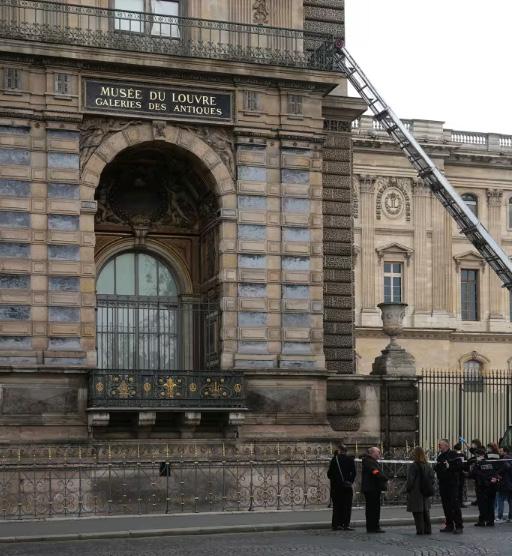
on the case. According to ABC News, as of October 25th, several suspects have been arrested, with four formally charged.
The museum has also faced repercussions. To preserve evidence for the investigation, the Louvre temporarily closed and reopened three days after the heist. Meanwhile, the director of the museum, Laurence des Cars, submitted her resignation, calling the heist a “terrible failure.” However, France’s culture minister, Rachida Dati, refused her resignation, even after she admitted security gaps were to blame. According to French media, a preliminary report revealed that one third of the rooms in the raided area had no CCTV cameras. Additionally, Natalie Goulet, a member of the French Senate’s finance com-
“What initially seemed to have been a cinematic heist has reshaped perspectives. ”
mittee, said that the gallery’s localized alarm had recently been broken. Investigations are underway to determine whether it was deactivated or originally non-functional. However, France’s culture ministry confirmed that the Louvre’s wider alarm system did sound, alerting staff who immediately followed protocol by contacting security forces and evacuating visitors. Despite this, officials and union representatives have criticized the museum’s security system for being “inadequate” and “aging.”
The public has also expressed their discontentment. While the heist caused political outrage – with President Emmanuel Macron labelling it as an “attack on our history” and other politicians calling it an “intolerable humiliation” and a “wound to the French soul” – public opinion seems to be mixed. Many are upset by the cultural loss, as well as the museum’s security flaws, although others are more fascinated by the audacity and cinematic nature of the heist – seeing it as a “movie-worthy
plot” and applauding the fact that no one was physically hurt. Cosmopolitan and NPR News mention that the incident has also become a source of entertainment and romanticization on social media, inspiring memes and Halloween costumes; these actions have received backlash for turning the event into a “pop culture moment.”
The Louvre heist has also sparked deeper reflections on humanity’s values. Many are concerned with the state of the world and have criticized both politicians and media outlets for treating the robbery as a national disaster – while remaining silent on ongoing genocides and persecutions. News outlets, such as Le Monde and TF1, have elicited controversy, given that the heist has had such massive coverage while humanitarian crises in Gaza, Sudan, Congo, China, and elsewhere are treated with little urgency. Some even find themselves sympathizing with the thieves as a form of rebellion against the obscene inequality and misplaced priorities.
The incident has also served as a wake-up call regarding colonialism and cultural ownership, given that the stolen jewels are products of colonial extraction. The sapphires, emeralds, pearls, and other gemstones were originally mined in Asia, Africa, and South America; regions historically exploited for their cultural and natural resources to fuel European wealth and power. Museums displaying such artifacts are now perceived by some as showcases of a history marked by exploitation, colonization, and violence. This has reignited debates on museum ownership and the ethics of cultural display.
What initially seemed to have been a cinematic heist has reshaped perspectives. It has raised ethical questions about whether certain museums serve as testimony to colonial rule, and humanitarian concerns about where society’s true priorities lie. Above all else, the Louvre heist has prompted reflection on whether this event will set a precedent for other museums in Western civilizations.
American Lives in the Balance: The Shutdown Tug-of-War
NICOLE MOTTA STAFF WRITER
As of November, the United States has entered its second month of a federal government shutdown. An uproar has continued to pervade the media ever since its first announcement. Cue the “blame game,” widespread fear, and political rhetoric on both sides. The level of distress is palpable – but this event is not unprecedented; it is, in fact, the nation’s 40th government shutdown since 1976. Still, the anxiety spreading among Americans is relevant, considering the millions of lives that hang in the balance during this longest government shutdown in history.
A government shutdown occurs when Congress fails to pass an appropriations bill, which funds government operations. When a majority in the Senate votes down such a bill, federal services come to a halt. Think of this as the American version of Canada’s parliamentary confidence vote, the difference being the US is not faced with a re-election to resolve the deadlock.
Nonessential federal employees are furloughed without pay. National parks, museums, and monuments close, while civil rights investigations and new medical research trials are paused. Various forms of financial aid that rely on funding from the bill are also jeopardized. Most notably, the operations of the Supplemental Nutrition Assistance Program (SNAP), which feeds 42 million low-income Americans, are at a serious risk.
At its core, the 2025 shutdown centers on a clash over health care policy, as Democratic senators reject the House’s funding bill over its failure to extend Affordable Care Act (ACA) subsidies and reverse recent Medicaid cuts.The ACA subsidies were established under the American Rescue Care Act in 2021, a federal law passed by Democrats during the COVID-19 pandemic to provide relief, making health insurance more affordable. According to Connecticut Mirror News, it allowed for those earning up to 400% of the
federal poverty level — currently set at $15 600 USD for individuals and $32 150 USD for a family of 4 — to qualify for healthcare aid. Without renewal, the extension of this aid will expire by this year’s end, endangering the livelihoods of the 24 million Americans, including farmers, small business owners, and self-employed workers unassisted by employer-based coverage, that all rely on ACA.
The Republican party, led by President Donald Trump and House Speaker Mike Johnson, have proposed a spending plan excluding the Democrats’ demands to extend ACA subsidies. Democrats, in turn, have refused to sign any appropriations bill that fails to include them. While the Republicans argue that Covid-era levels of inflation and spending must be brought down, the democratic senators have committed to stand up for the human right that is health care.
Indeed, prospective increases to these health plan premiums will be simply unmanageable; many will be priced out of coverage all together. According to the Kaiser Family Foundation, prices will soar on average by a shocking 75%, with a family of four earning $130,000 seeing annual insurance premiums jump by $16,100 USD, while a 60-year-old couple making $85,000 USD facing additional costs of up to $23,700 USD. One Nevada mother opens up about her worries for her family, telling PBS News, “ It’s a difficult decision — do I spend $500 on a doctor’s visit or do I buy groceries?”
These staggering costs explain why Democrats are holding their ground amid this political tug-of-war. However, their resistance comes with a heavy price. The longer the shutdown continues, the more that millions of Americans are left without pay or vulnerable, particularly those dependent on food aid programs like SNAP.
On October 31st, a pair of federal judges in Massachusetts and Rhode Island ordered the Trump administration
to continue funding SNAP during the shutdown. Still, President Trump has asked for clarity on the legality of those rulings, with the administration claiming that a contingency fund estimated at around $6 billion is not allowed to be used to sustain the program.
After a month without compromise, this standoff has ignited critical narratives on both sides. Specifically, the Republicans have not missed the chance to accentuate blame on the Democrats for the government’s paralysis. However, since the House proposed the bill, House speaker Mike Johnson has sent lawmakers home. This means that the representatives needed to ammend the funding plan and work toward a resolution have been kept out of session.
According to the Federal News Network, Johnson employed the historically successful tactic of “Jamming the other chamber,” which entails having the House pass its bill and then sending everyone home right before the deadline to force the senators to vote in favour of it. House Appropriations Committee Ranking Member Rosa DeLauro condemned this move in late September, saying, “Beyond allowing members to leave Washington before we have addressed the looming funding deadline, he has extended the Republican vacation by two days. Speaker Johnson is silencing members and shutting down the House in advance of a government-wide shutdown.”
Critics online, such as the channel Hey Citizen on Youtube, have called these actions out as “hostage politics”: when one party uses essential government functions as leverage to gain policy concessions. Many raise the question of whether it is fair to place full responsibility on the Democrats for this shutdown. Who is really stopping progress? If the natural course of democracy is to evolve and work towards solutions, deliberately interrupting this process is an act of defiance and regression.
Political Déjà Vu: Bill 2 Revives Quebec’s LongRunning Dispute on Doctor Pay & Performance
MIKA SAUVAGEAU COPY EDITOR
Since the adoption of Bill 2 on October 25th, which affects doctors’ pay and working conditions, social media has been abuzz with criticism, condemning the legislation as unclear and detached from the profession’s realities. While its full implications remain quite convoluted, the legislation introduces performance targets for physicians that directly affect their compensation —
“Health policy expert Olivier Jacques notes, “Forcing people to implement change is not necessarily the best way to implement change.”
raising concerns over doctors’ professional freedom and autonomy. Are they now salespeople instead of doctors?
For the past two years, the Fédération des médecins spécialistes du Québec (FMSQ) and the Fédération des médecins omnipraticiens du Québec (FMOQ) have been negotiating with the Coalition Avenir Québec (CAQ) government. Health Minister Christian Dubé has tabled four proposals, all of which have been rejected by the various federations.
In response, on October 24th, Premier François Legault convened the National Assembly in the salon Rouge and invoked closure — a parliamentary procedure that limits debate and forces a final vote. The law passed hours later by 63 votes to 27; all opposition members voted against.
This is not Legault’s first involvement in physician contract negotiations. In 2003, as Health Minister under the Parti Québécois, he proposed similar reforms that were at the time overruled by then-Premier Bernard Landry, which contributed to Mr. Legault’s departure as Health Minister. Bill 2, which builds on Bill 106 introduced in May 2025, represents his return to the issue with renewed determination.
The new legislation shifts Que -
bec’s physician payment model from a fee-for-service system to a performance-based structure grounded in capitation.
Previously, doctors were paid per service provided. Under the new system, however, they receive a fixed payment per patient, adjusted for the patient’s health status and vulnerability. Additionally, fifteen percent of physicians’ pay is now tied to performance indicators that are withheld until the end of the fiscal year and released based on collective target achievement.
According to the new legislation, every Quebecer must have a family doctor by 2027, which means assigning 1.5 million residents to existing physicians. What’s more, general practitioners must provide at least 16.5 million appointment slots annually, and 75% of emergency-room patients must be seen within 90 minutes of triage. According to the Ministère de l’Économie et de l'Innovation (MEI), wait times in ERs are currently around 5.22 hours for non-priority cases, and it is estimated that Quebec is still 2,000 doctors short of being able to feasibly treat all of Quebecers.
Moreover, non-clinical contributions — such as teaching, mentoring, research, and system leadership — are largely excluded from the performance metrics. This demonstrates a lack of recognition for broader professional work.
According to Michael Kalen, the coordinator of the Département territorial de médecine familiale de Montréal (DTMF), the performance-based model sets unrealistic targets, resulting in reduced pay, fewer vacation days, and grueling schedules that fail to account for individual circumstances. Over 55% of Quebec’s doctors are women, many of whom work part-time to act as primary caregivers. This bill forces them into an impossible choice between their family and their career.
One of the most controversial provisions prohibits doctors from engaging in any “concerted action” that could negatively affect the quality or the access to services. This includes the recent protests organized by doctors across the
province in response to the adoption of Bill 2. According to the legislation, 40% of their average weekly remuneration will be deducted for each day of “non-compliance.” This penalty also applies to those who fail to report the “concerted actions” of other practicing healthcare providers.
Maxence Pelletier-Lebrun, president of the Quebec Medical Students’ Federation (FMEQ), warns that around 1,000 medical students may not graduate in June due to class cancellations caused by the labor dispute, affecting future patient care.
Bill 2 shifts responsibility from policymakers to frontline physicians. Instead of addressing structural problems, such as insufficient administrative support and poor management, the government has imposed quotas and sanctions. Health policy expert Olivier Jacques notes, “Forcing people to implement change is not necessarily the best way to implement change.” Many physicians caution that the top-down approach may drive them out of the public system—or even the province entirely.
Since the bill’s passing, 25 family doctors have formally notified their federation, the FMOQ, of their intention to leave Quebec's public healthcare system, and the College of Physicians and Surgeons of Ontario (CPSO) confirmed to CTV News that it has received 148 license applications from doctors living in Quebec.
To date, the government’s assent has not been uploaded to the National Assembly’s website, and the FMSQ has requested an urgent hearing in the Quebec Superior Court to challenge specific provisions of Bill 2, particularly those prohibiting concerted actions opposing the law, arguing that they violate individual liberties.
While the CAQ believes that the bill will not harm the quality of care, doctors warn that there could be long-term negative effects, particularly on women in medicine.

ARTS & CULTURE
The Dangers of Aesthetic Without Memory
YASMINE BOUANANI SECRETARY
Our fast-paced world will polish anything until it shines, even emptiness. We are constantly trying to do everything a little quicker. We try to gain money quicker, find love quicker, produce food and art quicker. This burn-and-repeat rhythm barely leaves us the time to engage with deeper aspects of our existence. We flee depth for the refuge of the material, the visible, the beautiful. But there is a name for beauty when it loses its meaning: aesthetic.
When political, spiritual or cultural symbols are stripped of their histories and context in order to make them more easily digestible, they are fundamentally betrayed. We can’t expect them to retain their full weight and significance. This process, when repeated endlessly across screens and continents, leaves us with a world that looks full but has nothing to say. A traditional embroidery
and uncompensated. Their identity is turned into novelty:, something worn instead of lived. Take the case of the French fashion house, Carolina Herrera, which used traditional patterns from Indigenous communities in one of their collections. Their lack of acknowledgment of the origin of those patterns contributed to the economic marginalization of those indigenous communities whose art is being sold for luxury prices. This thirst for rapidly consumable prettiness might not be malicious in itself, but itsthe recklessness of it can lead to erasure.
Beauty without root, detached from community and purpose, can also increase pre-existent damages. In Thailand, for example, a Nazi iconography has appeared on t-shirts and market trinkets, not as hate speech, but as a design. This terrific symbol was, through ignorance, mistaken for fashion. It is a sad case of historical amnesia. But wWhen history fades, its horror can be invisi-

becomes a pattern, a black fist becomes a logo, a movement becomes a moodboard. The cultivation of aesthetics divorced from substance is not a harmless trend, it's a gateway to ignorance, the quiet loss of identity, and the systemic erosion of cultural and social power.
Imagine a sacred garment, once worn in ritual or resistance, reduced to a decorative motif on a mass-produced t-shirt. Its meaning will not only be buried but also profited from, all while, the communities it wasgot taken from are left, more often than not, unseen
bilized, hidden into decoration. This is the violence of forgetting. No symbol or words could be inherently “bad”,” but existing context can allocate it a tone and significance. Ignoring its context does not strip the object of its label. While it is certainly impossible to be knowledgeable of everything, this reality demands a duty of care towards the collective human memory. Nothing is more human than a mistake. However,The symbols we choose to wear and the histories they represent are not weights we can depossess ourselves of for convenience.
This phenomenon affects more than just cultural heritages, it is profoundly political. Activism and social movements are routinely absorbed into capitalist marketing. A $800 Dior “We Should All Be Feminists” t-shirt or a corporate pride merchandise show the repackaging of tools of justice into
“The tension is not between the beautiful and the meaningful, it is between the passive consumption and active engagement.”
slick advertisements. This is disempowering as it strips these symbols of their original strength and intensity. When activism becomes a brand or, a trend, illusions of progress replace the essential work of change. This comes from a refusal to engage in the difficult, unglamorous work of politics. This move is not accidental, it's a calculated performance. Selling neatlybits of cleanly packaged bits of activism allows companies to gain social currency without requiringforcing them to bear any substantial change to their own labor practices, supply chains, or employment methods. The consumer is left with only pretty things to say and wear, mistaking consumption for commitment.
Beautiful things have always fascinated us, but its pleasures should not override principle. The tension is not between the beautiful and the meaningful, it is between the passive consumption and active engagement. We must insist that fashion is a dialogue, not just decoration. Wearing clothes means wearing stories and values, which offersing to beauty both power and memory. Of course you can wear an item simply because its color attracts you, but that simplicity is a luxury that could be purchased at the expense of others and even of yourself. The true danger of aestheticism is not that we create a world of surfaces, but that we accept it.
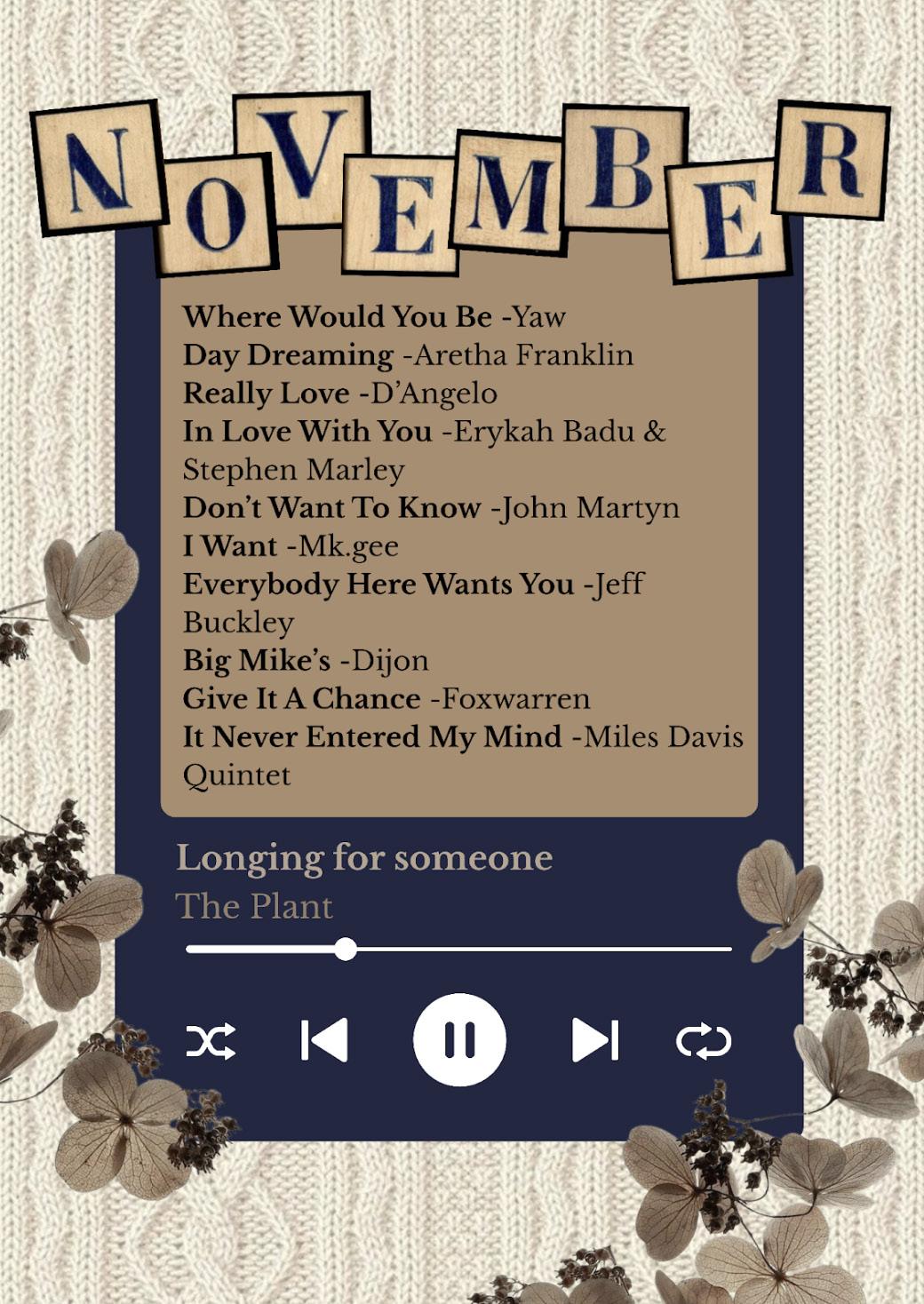
ARTS & CULTURE
The Plant Recommends
MINOLA GRENT MANAGING EDITOR
Frankenstein: No, it’s not like the book. Get over it.
Guillermo Del Toro’s Frankenstein was released to the public on October 17th. It played at the AMC Forum, right next to Dawson’s main building. Going in, I was excited because I love Del Toro’s work. However, I couldn’t help being apprehensive given the mixed reactions at its various premieres across multiple film festivals. “The screenplay [...] felt [not] like an adaptation of Mary Shelley’s Frankenstein but of [a] paper written by an 8th grader,” remarks a user on Letterboxd. “[M]ary [S]helley found rolling in her grave,” cries another.
Del Toro’s reimagination of Mary Shelley’s 1818 novel is just that: a reinvention. This 2025 rendition of Frankenstein focuses its attention on the dynamic between creator and creation
as their bond tethers between that of god and subordinate, and that of father and son. An exploration of both Victor Frankenstein’s mind and the creature’s sets the film apart from its predecessors. The runtime is fairly split between the two characters, effectively placing them equally as developed main characters.
Victor is a delightfully flawed character and a joy to follow. Del Toro beautifully captures his almost childlike whimsy as he excitedly picks apart corpses to build his creature. However, despite his entertaining penchant for the gruesome, Victor is a selfish liar, a maniacally consumed scientist unwilling to renounce his wild endeavour.
The creature, unlike in the source material, isn’t William, Victor’s brother. While this decision causes the loss of the brotherly love and relationship between the two, it opens the door to fleshing out Victor’s relationship with fatherhood. We get a look into the creature’s discovery of the world and its development of intelligence. Just like

a child finding its footing in the world, we watch him marvel at his first snow and long for the connection and familial love Victor never intended to offer him.
Ultimately, the movie is engaging, and Del Toro’s direction is a sight for sore eyes (but that is a given). That is why I ask that, going into it, you put aside its deviations from the source material. You can enjoy the original novel while nonetheless appreciating Guillermo Del Toro’s film and his interpretation.
MAYA JABBARI EDITOR-IN-CHIEF
On Kent Monkman’s History is Painted By The Victors exhibition
The Kent Monkman: History is Painted By The Victors exhibition ending March 8th, curated by Léuli Eshrāghi, John Lukavic, and Monk -

man himself, is meticulously organized to reclaim history’s perpetual colonial narratives and its impact on, specifically, Indigenous and Two-Spirit peoples. Located at the MMFA’s Michal and Renata Hornstein Pavilion, the exhibition further takes back the colonial narrative by not only taking place in a Greco-Roman style building, but also by being displayed by an institution that was built by Montreal’s elite, who happened to be White men.
Comprising 41 canvases, History is Painted By The Victors is divided into five rooms, each with a distinct intention to further the artworks' separate meanings in the collection. Displaying gender fluidity, coloniza-
tion taking place in numerous forms, the prison system’s impact on minorities, police brutality, and the fight for environmental conservation, this exhibition encompasses all, and does it so beautifully, generating thought-provoking questions within us.
Looking at these paintings and digging deeper to understand them and their placement in their rooms was a challenge, but an exciting one. Monkman’s paintings are the type that you walk away from thinking you’ve caught every detail in them, and you look back for one second, and another one comes to you, and by then you’re consumed by it.
I can’t express how much I recommend going to see this exhibition. It opens your eyes and forces you to think about the way in which colonial narratives have impacted – and continue to impact – people’s everyday lives.
VIA ROTTEN TOMATOES
MADDER! by Sparks - EP Review
JULIA AZZOUZ CREATIVE WRITING EDITOR
Despite their influence on the likes of Queen, Joy Division, The Pet Shop Boys, Morrissey, and Björk, the Los Angeles based band Sparks has remained relatively unknown throughout its 54-year-long span. Since the band’s formation in 1971, the duo of, brothers Ron and Russell Maels, have experimented with rock, disco, and electronica, leaving a major yet undervalued impact on glam rock, punk, EDM, progrock, and art pop. Recognized for Ron’s witty lyrics, Russell’s falsetto vocals, and their eccentric personas as well as ever-changing musical style, the Maels have perennially prioritized their creative vision over mainstream success, amassing a cult following in the process. Their personal philosophy is best expressed in a lyric in “Pacific Standard Time” from their 2020 album A Steady Drip, Drip Drip: “Our inconsistency is our consistency / Our insincerity is our sincerity.”
Still striving for innovation, Sparks released MADDER!, a four-track EP on October 3rd, 2025, to accompany their 28th studio album MAD!, released in May of the same year. Critically praised by MOJO and Record Collector amongst others, MAD! exhibits a more robust though cleaner sound than their previous work. As a whole, it reads as a compilation of theatrical synthscapes laden with energetic keyboards, distorted guitars, and layered vocals. Their songwriting is more direct though characteristically absurd (a song called “JanSport Backpack” explores breakups and relationships in an age of commodification), with words almost becoming like notes blending into the competition. In this album, repetition takes prominence as a foundation of the songs’ structure, enforcing themes of societal pressure, dedication, and authenticity in a world framed by daily performance.
Though MAD! has its own distinct sound, I think it’s weak in certain areas. Stripping down the lyrics to their bare essence, Ron gets the message across but with less flourish.
The intricacy in this album lies in the instrumentals, but I was searching for their more evocative and narrative lyricism (1974’s Kimono My House best epitomizes Ron’s writing) to complement it. Some songs in MAD! like “Hit Me, Baby,” “A Long Red Light,” or “Drowned In A Sea of Tears” seem to rely heavily on what I can only assume to be an ironic subversion of musical clichés.
As the first ever Sparks EP, MADDER! contains four tracks — “Porcupine,” “Fantasize,” “Mess Up,” and “They.” The EP’s opening, “Porcupine” tells the story of a bristly woman who “rubs folks the wrong way” and is “rough around the edges” over a playful synth melody. Russell sings in his signature falsetto as drums and guitar round off the chorus. It’s lighthearted, it’s catchy; what’s not to like?
The next song, “Fantasize” is… not my favourite. It begins with a monotone drone of repeated no’s booming against a backdrop of post-punk electronica reminiscent of Depeche Mode. Ron’s lyrics on this one seem juvenile in contrast to other tunes as Russell sings “How can I make you realize/ That all I do is just fantasize/ All anew, all anew, all anew/ About you, about you, about you.” The chorus of no’s grows louder and continues behind the lyrics. Maybe I don’t get it and I’m willing to leave it at that.
reason for “running away” and suggests confessing these mistakes as a solution. I really loved this piece’s wonky sound and its mockery of failure as a psychological weapon.
As a grand finale, “They” wraps up the EP with a darker atmospheric sound. Russell’s voice is layered to create harmonies as he sings about an unsatisfiable audience who hoped for an all-night performance. He lists an assortment of dances “they” wish to see like the Twist, the Cha-Cha, and the Twine though “they felt so let down”
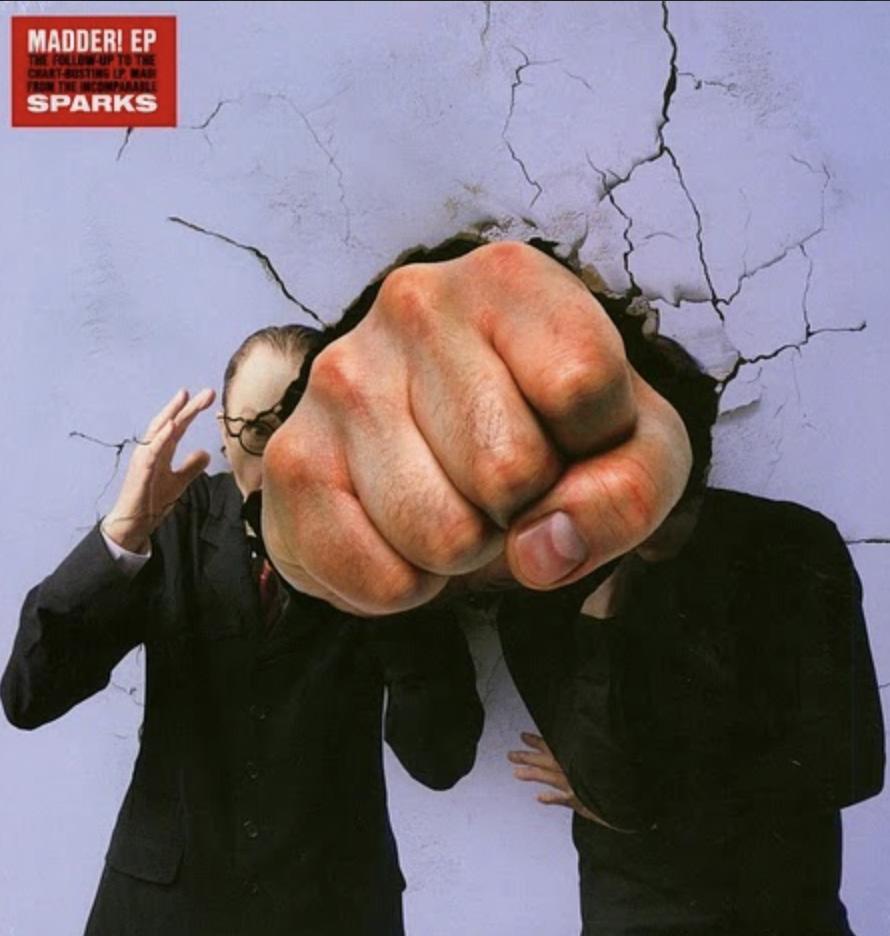
Then comes “Mess Up,” a rhythmically complex tune (please help me find the time signature) in which the speaker addresses someone who makes the wrong decisions and camouflages them with lies rather than admit to error. Over a bouncy yet off-kilter electronic mix, the speaker frames shame as the
and so “did not stay”. It offers a sharp contrast to the playfulness of “Mess Up” but follows in a similar vein. They both discuss the perfect ideal putting pressure on performance — for everyday people and artists alike. All in all, I was pleasantly surprised by this EP. Although MADDER! makes sense on its own, its ties to MAD! are vital to its artistry. Both explore similar themes, exhibit a stronger sound (produced by the duo since the late 1980s), and carry some great songs incomparable to anything else being released now. I don’t think either one is perfect or self-assured as there are definitely a few skips in each, but I recommend a listen anyway. It’s not like anything you’ve heard or anything else they’ve made.
Arresting Mermaids: From Third Grade to the Montreal Stage
MAYA JABBARI EDITOR-IN-CHIEF
In Montreal’s local music scene, few emerging CEGEP bands have been together quite as long as Arresting Mermaids. The four-piece indie melodic rock group has been finding their sound over the last few years, with talent and drive that spans decades and genres, from indie to folk to classic rock; they are truly heading towards the making of music that feels both nostalgic and new.
Uncommonly, the members of Arresting Mermaids come from across the city’s CEGEP circuit. Vitor Avolio Quattrocchi, the lead singer and rhythm guitarist, is at Dawson. Matthew Bedwany, their lead guitarist, is in his last year of high school, hoping to soon attend Dawson and meet up with Vitor. On the bass is Josh Corado, who just graduated from Dawson and is now in his first year at McGill. And finally, behind the drums is Chris Bedwany, Matthew’s brother, who currently studies at Vanier.
First meeting at McCaig Elementary School in the third grade, the band explains that knowing each other for so long has helped them in the long run. Although forming a lasting group took time, their connectedness with music has no doubt shaped who they are. They’ve been running for 3–4 years, but they say that “[their] journey really started when Vitor called everyone around two months before Secondary 5 finished, and brought back Arresting Mermaids” as they had been on a bit of a break.
Before then, things were kind of confusing and finding their sound was hard. One story, the band affectionately calls the “guitar incident,” captures that chaos. In our interview, they recalled that at one point, they had three guitarists, a keyboardist, and another singer. For them, there were way too many people, and they said “It was like [they] were just a bunch of amateurs, not skilled, but so in love with music and the making of it.”
That stage for Arresting Mermaids didn’t last, but it set the tone for their persistence. And in 2023, they got Mat-
“Playing both Bluedog and Van Horne, Arresting Mermaids feels thankful for the experiences they’ve been given with the local artist/music community during such a challenging time. ”
thew to play with them, saying it was “the best decision [they] ever made as a group.”
Today, the band identifies as Indie/ Rock or Melodic/Rock and proudly calls themselves a “Dawson Band.” They’ve moved beyond covers (though they enjoy performing them very much) and are settling into their own creative identity. As far as people know, the only original they have released is “Plenty of Fish” in May. But don’t fret, so much more from them is coming.
Excitedly, they told me that they have been working on their debut album, At The Fair, which is nearly finished. Matt says that every song on it kind of fits into a different genre, yet the tracks still work so well together. According to Chris, “[They’re] trying to find their sound, and the album is kind of more
melancholic than [they] expected.”
Including their fun and strange lyrics, their songs have an amusement parkfair-like feel to them. Vitor adds that “once [they] release the album cover, easter eggs will be hidden in it”, alluding to its different tracks. The band also cites the album’s addition of piano, synth, trumpet, choir, and whistling as a model for their own approach to layered production and experimentation. They tell me that their biggest inspiration for their debut album is The Beatles’ Sgt. Pepper’s Lonely Hearts Club Band
After asking them about their favourite performance, they all agreed that playing under the Van Horne Bridge was special, and that’s what made it so unforgettable, especially when they covered “Karma Police,” by Radiohead and everyone was singing along. Surrounded by friends and family, it became one of those nights that reminded them why they play. “When we settled in, the adrenaline kicked in, and it was addicting,” said Vitor. “The rowdiness made it fun,” he added.
Matt also mentions that playing at a Canada Day festival, two days before their Van Horne Bridge performance, was his favourite because they were on a bigger stage, meaning bigger equip-

ment, and more room, making their experience feel more professional.
Playing both Bluedog and Van Horne, Arresting Mermaids feels thankful for the experiences they’ve been given with the local artist/music community during such a challenging time. Chris jokingly says, “To everyone, if you like a venue, don’t let us play there because clearly they close down.” The laughter is bittersweet. They tell me that as artists, it’s really sad to see such known and iconic venues shut down, loved by not only them, but also so many other bands and their crowds. Still, they’re grateful for the ventures they’ve had. Van Horne was a classic spot, and they feel beyond lucky to have played there just a week or so before it closed for performances.
Arresting Mermaids has even begun collaborating with others in the local scene. They’ve jammed out with The Tower at Dawson’s Bandfest, which was a bigger production, three guitars, two singers, and made it a whole lot of fun, says the band.
Of their favourite local artists, Photobomb, Lucy’s Delirium, Honey, Save
Our Sleep, and Plus the Band, all take the cake as they continue to inspire them and where they plan on heading musically.
Early on, aiming at grounding themselves in the music scene, the band cycled through several potential names. Vitor says, “[They] originally named [themselves] Pinheads, but it was copyrighted.” Another consideration was “Close Encounters of the Third Grade” because of their meeting.
But how they really got Arresting Mermaids was pretty close to picking names out of a hat. Chris explains that he and Josh were hanging out in Josh’s pool and were spitballing, by using a generator online and, after quite some time, landed on Arresting Mermaids — you might’ve caught the name’s similarity to The Smashing Pumpkins, whom they love.
As a final note, I asked them: if they could attend any concert, which one would it be? Their dream choices reveal just how varied their musical roots are. Josh says that going to see Paul McCartney soon is his dream, and that’s coming true. Vitor notes that seeing The
Beatles would be revolutionary. Chris picks the Misfits, while Matt opts for Van Halen — specifically “at their peak with David Lee Roth.” It’s clear that each member’s personal taste adds a different colour to Arresting Mermaids’ palette. With their debut album on the horizon and their roots firmly in Montreal’s youth-driven music community, Arresting Mermaids are ready to take their next leap with At The Fair They may still be students, but with a profound love for music and plenty of sound left to discover, they’re already making waves.
“It’s clear that each member’s personal taste adds a different colour to Arresting Mermaids’ palette.”

Has the Irish Obsession been Feeding Us? On pop culture as fuel to
MAYA JABBARI & CHLOE BERCOVITZ EDITOR-IN-CHIEF & NEWS EDITOR
Obsession, nostalgia, and identity alike all stand beneath that same umbrella that is yearning. And, while social media has personified it in such a way that detracts from its value, I still believe that this nearly inexplicable feeling merits exploration: the wellworn theme of the human condition is the idea that we all have universal experiences that define what it means to be alive.
Lately, I can’t help but notice how Ireland and Irish culture have become everyone’s newest obsession. However, perhaps our latest crush isn’t truly much about Ireland at all; rather, it serves as a reflection of how our hearts haven’t stopped aching.
We’ve always needed something to obsess over, from the myths and faiths that once shaped civilizations to the fandoms and playlists that now define our digital age. We attach meaning to something external – something outside ourselves. In an effort to feel transient, we lament our identities onto places and objects that were once the memories that made us who we are.
But now – why is Ireland, and Ireland specifically, so emotionally charged? Especially for those that have never even set foot there?
Before Ireland, there was (and arguably, for a certain demographic, still is) Japan. Particularly among White men, Japan has almost always been a blueprint for obsession. Japanophilia, the lust for everything Japan (culture, architecture, lifestyle..etc.), has, in recent years, taken over the minds of Western culture. The term “Japanophilia” describes the love of everything “Japanese.” The scholar Jehyun Jenny Lee from the University of Washington argues that Western anime and manga fandoms are driven by “the fantasy of Japan in the Western imagination” — a longing for “something culturally and aesthetically different from the West in the age of globalization.” However, it’s important to note the difference between obsession and fetishization
feel, again.
here. Dr. Bitna Kim, a PHD professor at Indiana University of Pennsylvania, interviewed White American men and found that there seems to be far more than obsession with Japanese culture and Asian women as a whole because of grounded stereotypes. Here lies the difference between our nature, as humans, to consume Japanese culture and Irish culture. Those engulfed by the
atmosphere that feels almost as if your Pinterest board could give you a hug and a big kiss at the same time.
But Ireland isn’t just about the aesthetic, for it has become both a niche and a muse within pop culture. A few years back, it was often remembered as the filming location of Game of Thrones. Since the pandemic, however, Sally Rooney’s global success of

former tend to lead into fetishization (particularly the West) and those interested in the latter, simply put, express a fondness and yearnfulness to live there. Especially among young people, Ireland has been long revered and regarded as a great place to live and breathe. Its distinctive charm unravels through a tapestry of qualities: a rich literary legacy, a folky atmosphere, sweeping emerald-like landscapes, and tempera-
“We attach meaning to something external – something outside ourselves. In an effort to feel transient, we lament our identities onto places and objects that were once the memories that made us who we are. ”
mental weather. But really, my list was hard to end. There’s something about Dublin’s walkability and affordability that makes the capital so incredibly approachable. With its Georgian architecture and its irreplaceable sense of pub culture, Dublin just evokes an
Normal People, Conversations with Friends, and Intermezzo has reintroduced Ireland as a state of mind. Loving too much or not enough. Feeling too hard to love. It’s all just a bit romantic to me how it reflects an intimate piece of ourselves that so many of us secretly share with one another.
And with Sally Rooney came, you know it, Paul Mescal, the actor who played Connell in the Normal People limited series. Another prominent Irish actor that has been gaining recognition since the mid 2010’s is Saorise Ronan, known for her lead roles in both Ladybird and Little Women. According to The Irish Times writer Patrick Freyne, in an article from 2024, “Right now, actors such as [Cillian] Murphy, [Paul] Mescal, Andrew Scott, Barry Keoghan, Eve Hewson and Saoirse Ronan are dominating recently celebrated films such as Oppenheimer, All of Us Strangers, Saltburn, Flora and Son and Foe.” Since the release of this article, the popularity for these Irish actors has certainly spiked with the release of, specifically, Gladiator 2, for Mescal. Even The Bear star Ayo Edibiri has become the internet's poster-child for Irish fascination (she’s from Boston), and her obsession validates ours (she’s just like us).
VIA HULU
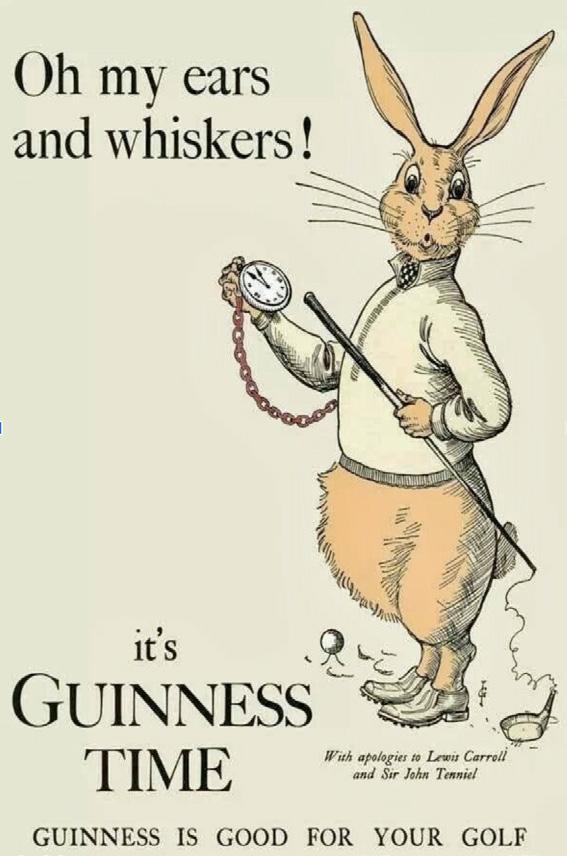
In music, the folky, hazy, and natural sounds that Irish artists bring to the table are like no other. The Cranberries’ “Linger” and Sinead O’Connor’s defiance feel eternal. Not to mention Hozier, whose voice feels both urgent and filled with longing. Ache and resistance make this yearning for Ireland both relatable and groundbreaking, because the artists channel these emotions themselves. It feels holy.
Pop culture’s Irish wave works because it feels participatory. What you consume becomes who you are. Part of you migrates to Dublin, to Sligo, to some place green, damp and honest. You begin to crave it, to nourish it.
With that being said, who would’ve thought that Guinness (known to be older men’s beloved beer of choice) would become incredibly popular among our generation. According to the brand-valuation firm Brand Finance, 67% of 18–25-year-olds now think Guinness is a “cool” brand, up from just 22% in 2023. A further 60% of young people now see Guinness as a “modern” brand, up from 33% in 2023, and “consideration” among women has risen from 67% to 77%.
Guinness’s rebrand and popularity is also really part of Ireland’s rebrand. It’s authentic, and authenticity is what we want. It’s also long-lasting; it’s a feeling of belonging to a place that is unapologetically itself and holds that with pride.
Ultimately, in yearning for Ireland, by extension, we long for everything that it has brought us. Be it sad books, sad music, actors in sad roles – maybe we even should be asking ourselves why we actively choose to cultivate our pre-existing feelings of doom? There’s no doubt in feeling despair: inflation and interest rates have skyrocketed, armed-conflicts rage across the world, and political polarization has bred hate speech, violence, and gridlock.
Maybe I’ve only brought this up because I’m on my phone more than ever, and Jaden Smith’s voice keeps begging for me to “talk about the economic and political state of the world.” Undeniably, there are myriad other factors to consider when examining the Irish obsession, yet that doesn’t detract from its striking parallel to the times we’re living in – which is bound by this strange, shared, and almost habitual disconnect.
What makes this so striking is in its familiarity: one’s yearning to “go back” to Ireland eerily feels as if history is
looping back into itself. A certain cultural melancholy always follows a collapse of some kind, raising the question of whether this all might be a recession indicator? Take the First and Second World Wars: society’s disillusionment birthed the creation and gravitation towards philosophical explanations, such as existentialism, absurdism, and modernism. In the quest to find meaning and understanding during a period of catastrophe and confusion, culture served as a voice of reason – a reflection of one’s mind, body, and soul. Given that so much of Ireland’s creative identity is rooted in sorrow, the same cycle continues. We gravitate toward it in an attempt to locate meaning amid uncertainty; to find coherence in a moment that feels like nothing but utter chaos. Like many of those who came before us, we turn to art not only to escape, but to better appreciate the sometimes awful human condition – for Ireland itself makes us feel more human.

VIA HULU
VIA HULU
Is Musical Theatre Becoming Cool?
JACQUELINE GRAIF VOICES EDITOR
The term “theatre kid” has historically referred to an annoying, young theatre lover who likely participated in local theatre and obsessed over musicals. I grew up as one of them, performing in local theatrical productions and visiting family in New York often to hone my love of Broadway musicals. As I grew older, I learned that being a “theatre kid” would never be a cool thing, and I hid behind my love of Reneé Rapp early on into her career, and kept my Playbill collection neat.
“With the rise of movie musicals such as Wicked and Mean Girls becoming a part of popular culture, it is fair to say that theatre kids are becoming cool again.”
To my surprise, Reneé Rapp blew up and became a global pop phenomena. Her album Snow Angel debuted at #44 on the Billboard 200 in its first week as she simultaneously broke the world record for most first week sales for a female pop debut in 2023. Her sophomore album BITE ME hit #3 in the Billboard 200 in August, marking Rapp’s first Billboard Top 10 in her career thus far.
Following Rapp’s first album, she revived her Broadway role (2019) as “Regina George” in the movie adaptation of Mean Girls: The Musical. In reprising the role, not only did she attract her already large theatre fanbase, but her new fanbase from her music. The marketing for the movie then purposefully did not include any indication that it was a musical, to attract people who loved the 2004 cult classic. Auli’i Cravalho, who played Janis Ian, also starred in the movie, attracting her fans from Disney’s Moana franchise, where she originates the voice of the eponymous
character. Non-theatre lovers piled into movie theatres, and unknowingly watched a musical adaptation of Mean Girls. The movie absolutely blew up on social media as it was not received well by critics, but is generally adored for its nods to pop-culture and sapphic themes that were not predominant in the original film.
The blow up of Mean Girls: The Musical in 2024 caused a new fanbase to rise, skyrocketing the original Broadway cast album with streams up by 200% since the film’s January release, according to Playbill. This will kickstart a new era of non-theatre lovers who will listen to Mean Girls and transform into theatre kids, with their newfound love of musicals through the charms of pop-star Reneé Rapp.
Similarly, last year, Ariana Grande and Cynthia Erivo starred in Jon M. Chu’s Wicked , an adaptation of the beloved Broadway musical. Though considered a “classic musical” to theatre lovers, it was mostly unknown to the public. The casting of stars like Ariana and Cynthia, who have both been on Broadway and could be considered theatre kids themselves, lured in a fresh audience. Other big stars appeared in the movie, such as Jonathan Bailey (Bridgerton, Fellow Travellers), Bowen Yang (Saturday Night Live!), Jeff Goldblum (Jurassic Park, Independence Day) , and Michelle Yeoh (Everything Everywhere All At Once, Crazy Rich Asians). These big names created a stir on social media, as new fans became curious about the movie. These stars bring a certain legitimacy to the Wicked storyline that almost strips it off its total nerdiness, and brings in a set of sophisticated actors to something otherwise niche.
As an original fan of the Broadway musical, I was very excited to see an entirely new audience appear for something that was lesser known. Marketing for this movie was incredible, as brands such as Target and Starbucks, among many others, released their own collections of Wicked merchandise to
create buzz around the film’s release. Memes arose through Ariana and Cynthia’s press tours, such as the “Holding space for the lyrics of Defying Gravity” (Tracey E. Gilchrist) meme. The movie became beloved by movie-goers, and accumulated $165 million in its opening weekend globally, says Variety. Fans love Chu’s attention to detail, showcase of LGBTQIA+ characterizations, and casting choices as the musical has life breathed into it from its first original staging in 2004.
Since Wicked was made into a twopart movie, making it a total of 5 hours long, the second part Wicked: For Good will hit theatres on November 21st. While the sequel has yet to release, it is expected to have similar success to the first part, given that the trailer for the sequel hit over 113M views in its first 24 hours, surpassing its predecessor by 38M views, states Variety. Highly anticipated, Wicked: For Good is likely going to break more box office records and, of course, touch the hearts of watchers everywhere.
With the rise of movie musicals such as Wicked and Mean Girls becoming a part of popular culture, it is fair to say that theatre kids are becoming cool again. The beloved movies, whether for their memes, popular actors, or beautiful execution, have given life to a newera of theatre kids deriving from their love of these new cinematic musical masterpieces. The younger generations are looking up to pop-stars Rapp and Grande, and are even dressing up as Glinda and Elphaba for Halloween. The newfound communal love for classic musical theatre will spread into the new generation, and bloom a love of theatre that will last a lifetime. Even though movie musicals are a different way of appreciating theatre, it allows a bigger population to connect through beloved source material.


CHLOÉ LAMPRON @QUOKAII7
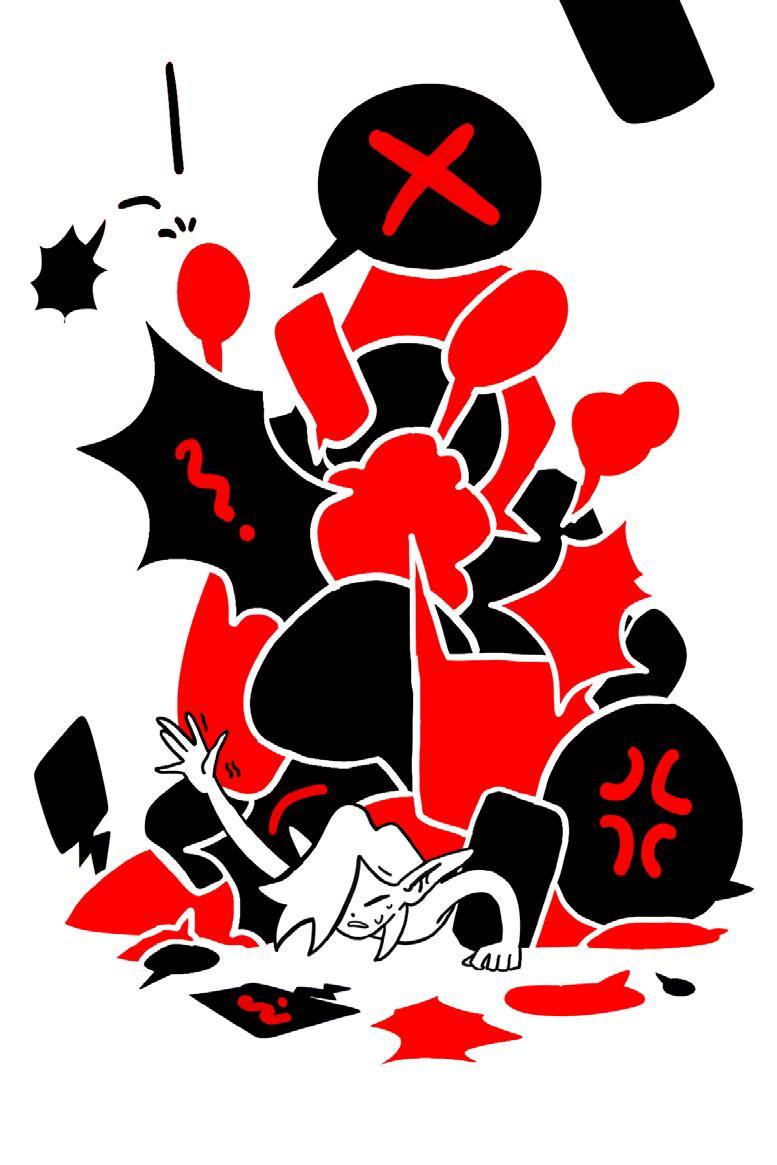

SANAD HAMDOUNA @SWORDHYMN_
MARRIE HAN @SOLOCHISM WORDS CAN BREAK MY BONES
How the Situationship Has Taken Over Us All
ORION PEYROL STAFF WRITER
Gen Z loves to make up words, especially to describe dating, but none mean as little or as much as “situationship” does. It’s used to describe any romantic adjacent relationship that is undefined or unclear. So, it can pretty much mean anything that’s more than friends but not quite dating. The ambiguity in the word’s definition makes it incredibly hard to describe to anyone not already familiar with the term. I mean, have you ever tried to explain a situationship to your parents? They’re not surrounded by the word or the experiences with modern dating it encompasses. They haven’t seen the countless memes and videos of people crashing out over their situationships. If you do try to explain situationships to people who are no longer in their young adulthood, many of them will ask the same question: why would we put ourselves through this?
We’ve just drunk the Kool-Aid, we’ve bought into this idea that this dynamic is normal and the only way to date people in the 21st century. Who is
selling that idea to us? The usual perpetrator, our phones! In the last decade the internet has become the arbiter of social
“The contemporary crush is all about having a person to stalk more than a person to talk to. ”
conventions. Whatever becomes adopted by the majority online is reflected onto our daily lives. “Situationship” as a word was coined in the 2010s, but only once it took off on TikTok has it become embraced by the mainstream. Every day we see countless videos about situationships, talking stages, dating mishaps, and girls crying prettily with smudged mascara about some guy that ghosted them. These videos enforce a new norm for dating in our generation and create a slew of new words to describe it.
Words and the language we use directly influence our way of thinking and understanding situations. There’s an idea called the “Sapir-Whorf Hy-
pothesis” proposed by Benjamin Lee Whorf, an American linguist from the late 19th century, that supposes that language directly affects our ability to think or understand a subject. For example, in a theoretical world in which a language does not have a word for the concept of love, the experience of love still exists but the capacity to talk about and intellectualize that concept is rendered much more difficult. We have created an entire new dictionary to describe our experiences and lessen this effect, but this comes with its own pitfalls.
This new vocabulary we’ve created exacerbates the problem with situationships. The main issue in this relationship dynamic is the power imbalance and words and expressions like “ghosting,” “lovebombing,” “guilttripping,” “being a red flag,” etc. are used constantly (and often stripped from their original context in psychology; not everyone is a narcissist I promise) that we’ve come to see it as a normal and well adjusted way to talk about a budding romance. These new words always have the connotation of there being a victim

and a perpetrator. Furthermore, using that vocabulary constantly subtly makes us believe that that power dynamic is true of all situationships. We now go into a new romantic entanglement being hyper-vigilant of any sign of a red flag or an ick. The thing is, if you’re looking for it, you’re going to find it. I’m not saying that there are no red flags but confirmation bias is very strong; if you go into a situation expecting them to suck and gaslight you, you’re eventually going to be proven right. Furthermore, if you magnetize this phenomena onto an entire generation who is then sharing those experiences with each other on a mass scale online, you get an entire generation of people who struggle to believe in love.
This imbalance that our new language speaks to can be traced back to the popularisation of dating apps. They’ve brought the normalization of hookup culture, for better or for worse, and with it the fear of only being wanted for one night stands. Many people enjoy one night stands but some are just afraid to ask for more. For the majority of Western society, monogamy was a very strongly enforced social norm. However, this has shifted since then, in part because of dating apps. On these apps it’s presumed that you’re talking to or sleeping with multiple people at once. Monogamy is no longer assumed, it’s now something you have to ask for.
Having to ask for exclusivity creates a stronger fear of rejection. We have a fear of the other person only wanting one thing from us, of the unsaid part of non-committed relationships: that if you ask for something more, you will get nothing at all. What was once a norm is now considered a big commitment. For some, this change in norm is very welcome. It allows for casual sex and relationships to be seen less negatively, and lets people explore more freely before settling down or never settling down at all. But for others, it leaves them always craving, at the mercy of the three dots of an incoming message.
This shift in convention is representative of a shift in our society. We no longer have a set timeline for
relationships or life. Of course there are still certain expectations we hold about what life should look like, but, in general, our paths and decisions are much more in our control. It used to be that if you weren’t married and on the way to having your first child in your twenties, you were doing something wrong, but, today, the same age range can be experiencing entirely different life stages. We now have to navigate
the woman.
Social media and online communication has been an added strain on modern dating. We have a never seen before access to almost anyone, at any time, which makes us feel that our Hinge date taking a few hours to respond is a lack of interest. We have so many walls up because we expect to get hurt. We jump from prospect to prospect because

relationships knowing that we aren’t all on the same page. This is where a lot of the complications in modern dating come in: you have some people who are ready to settle down and be committed, and others who are in that exploratory phase.
Then there’s the elephant in the room: the role that gender plays in situationships. There is a trend that I’ve noticed in which the people who seem to be lamenting the most online about situationships are women. Women seem to be disproportionately the ones hurt by the emotional rollercoaster. They often find themselves chasing after men, trying to get them to commit, and getting ghosted. This is because of the difference in the way we are socialized: women are told their value is in their capacity to keep a man happy, and men are told theirs are from their conquests and emotional repression. When you add to that the difficulties of dating apps and a lack of communication of wants, someone ends up hurt and it’s usually
there are so many more fish than we’ve ever had access to. If you ask me, the sea has gotten too big. Social media has also created a culture of constantly waiting for somebody to reach out to us because there is no barrier to starting a conversation, so why aren’t they? And so, we spend all of our time staring at that new photo of theirs wondering why they aren’t reaching out. The contemporary crush is all about having a person to stalk more than a person to talk to.
Trying to analyse phenomena like situationships is incredibly difficult because it’s an ever shifting kaleidoscope of norms, trends, and socialization with infinite influences and effects. Things will continue to evolve and along with it our approach to love and relationships. There are so many ways the 21st century, with all its quirks and faults, can and will affect us that I’m profoundly curious about the future of the situationship, and you should be too.
Why I Did Not Understand The Movie Lady Bird
ALAA ETTAOUTH STAFF WRITER
In my early days of preadolescence, I dreamed of finally being a part of “girlhood.” I envisioned myself living life like every effortlessly stylish girl in movies: walking around the city with a cup of coffee in my hand, holding hands with my friends while we laughed about our lives and talked about the next shopping spree we were about to go on. I felt profoundly connected to this sentiment as I was eager to finally be a part of it.
The term “girlhood” defined by the Cambridge Dictionary as “the period when a person is a girl, and not yet a woman, or the state of being a girl”, is widely used nowadays, yet it reflects a personal experience or vision unique to each person. It is so universal and precious that we needed to translate this feeling into art, such as cinema and television. Some were mocked on the playground for liking pink or playing with dolls and, therefore, rejected the fact of ever enjoying an ounce of their femininity. However, when we turned on our television we saw the complete opposite as being a fairy or a pop star was deemed cool. The simple fact of being a girl seemed so cool!
As I grew up, I began to watch a lot of movies, trying to make sense of my evolving experience as a
girl. I would attempt to feel seen and put in the shoes of another girl who lived my perfect definition of girlhood (even if it was only for an hour and a half). I watched every rom-com, read every book about a teenage girl rambling about her life I could get my hands on like Le Journal d’Aurélie Laflamme or Dork Diaries. I lived for shows like Lou!; even if my life had almost nothing in common with hers, I would still imagine myself sitting on my bed, eyes on a window surrounded by city life just like how she described her life through her sketches. That is when I eventually came across the movie Lady Bird. In modern internet culture, this movie is the quintessential representation of experiencing girlhood: it tackles themes like anger, strenuous relationships with parents, and the ups and downs of finding yourself while navigating a world you do not seem to fit into. Instead of fully enjoying my watch, I remember feeling so confused after watching it, and I simply could not put my finger on why, because I wholeheartedly thought it had the perfect recipe to become one of my favourites.
My take might seem beside the point, even childish, but it was plainly because she did not look like me. I could not completely relate to her story because I was incapable of putting myself in her shoes, even if it was only for an
hour and thirty-five minutes as it did not fit me to begin with. This distinction did not affect me as much as a kid, when teenage girl experiences were still vague and unknown territory to me. But when I watched Lady Bird, I had passed the age where movies or shows were only watched as means to be entertained for a moment– I wanted to see myself on the screen, to catch glimpses of personalities I could embody because I am still searching for my true self.
It was hard because when a nonwhite girl was introduced in a series or a movie, her experience as a girl was never the subject; she only served as a tool for the white main character or as an example to feed harmful stereotypes. Those girls were stripped of any sense of girlhood, reduced to their ethnicity or cultural problems. They were never pictured as whimsical or desirable, but rather as someone to be pitied and unimportant. In Gilmore Girls, a show extremely dear to my heart, this insensitive trope marked me. While Rory Gilmore was busy juggling boys that were obsessed with her and being her quirky bookworm self, Lane Kim, her best friend, was exempted from any sort of desire or romantic relationship. When Lane was the centre of attention, it was because her controlling and “crazy” Korean mom wanted to send her to a Korean Catholic school or was

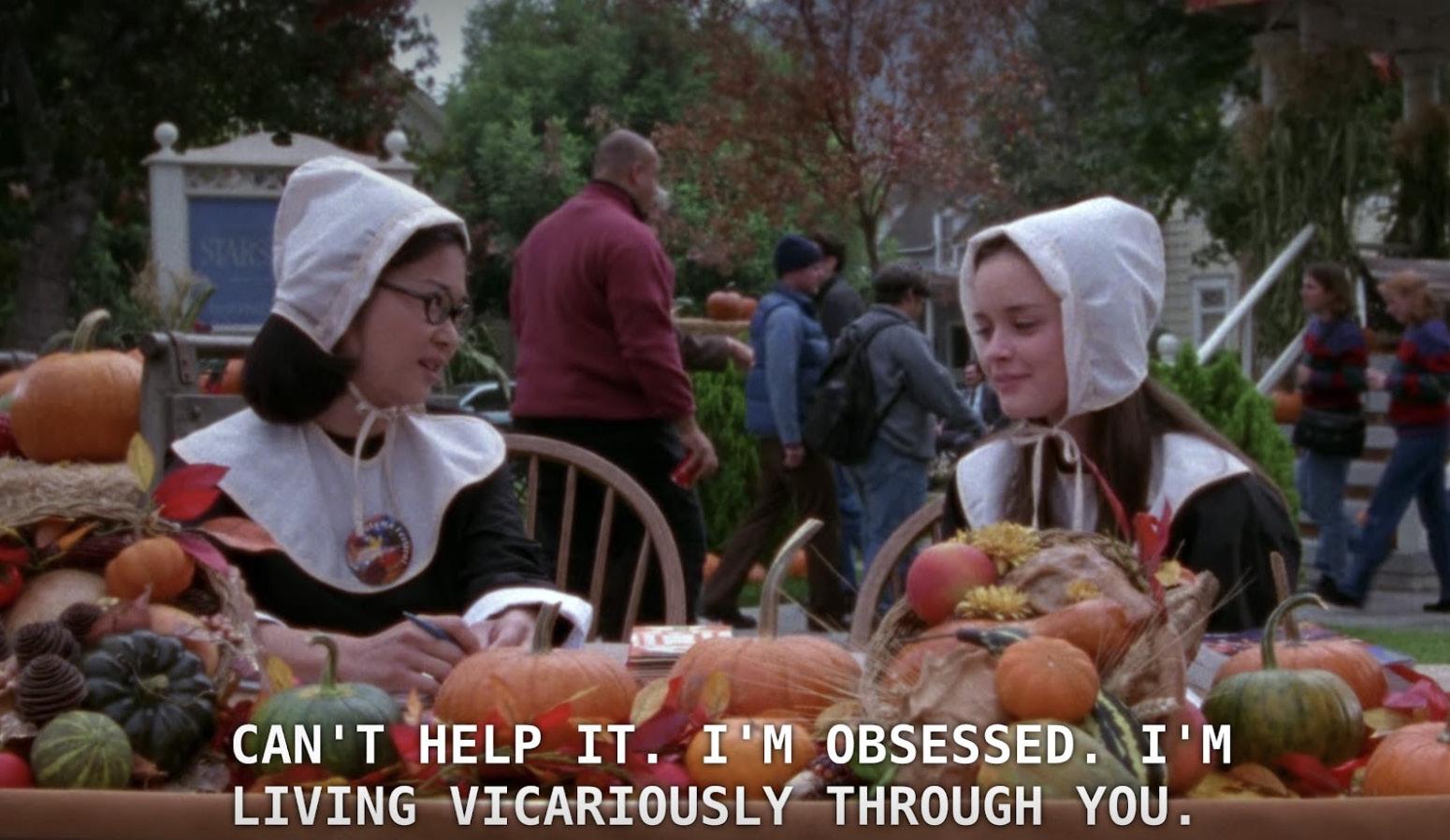
suspicious of her dating a white boy. Lane Kim’s storyline could never be detached from her ethnic background, for she only served as a sort of comedic relief or as an attentive ear to Rory –the only person in the show who could experience every facet of girlhood.
Nonetheless, movies and shows may have strong holds on the person that consumes them, but they also shape the common narrative and are the direct reflections of how our world functions. TV can also shift consciences and enhance how certain marginalized communities, thus women, are perceived and treated. How we carry, describe, and present ourselves partly comes from the media we consume. However, when whiteness is the only acceptable form of representation of the female experience, it obviously affects many social spheres of our society. This normalization of the absence of intersectionality in the media directly stains our modern vision of feminism, that is often now described as “white feminism.”
Indeed, movies and various depictions of women’s struggles, such as stories about them climbing the social and economical ladders, contribute to the advancement of the feminist cause, to a certain extent. This represen-
tation made feminism more present and accessible to a large public while also “glamourizing” it. In a way, taking part in activism as a white girl by protesting the unjust, sexist dress codes is considered acceptable. However, raising concerns about how this way of denunciation may have worse repercussions
“This lack of intersectionality in media is an issue that has set a cage of “acceptable requests” women can make in the name of feminism – requests that often solely benefit white women. ”
for girls in ethnic minorities (as seen in the Netflix movie Moxie) is irrelevant, or worse, mocked and degraded. This lack of intersectionality in media is an issue that has set a cage of “acceptable requests” women can make in the name of feminism – requests that often solely benefit white women. We can ask for more women in higher posi-
tions because it is a tolerable portrait of white women in cinema like in Legally Blonde or The Devil Wears Prada, but we cannot dare to speak up on issues touching marginalized communities for example, the systemic medical discrimination Black women face or how women in minorities are more subject to poverty than white women since they do not fit this vision of docile and unrevolutionary feminism the media feeds us. These concerns are too truthful and, consequently, impossible to be glamourized or turned into stories with a final moral that really resolves the issue. Elle Woods may have succeeded in dismantling the patriarchal prejudice everyone had toward her in an hour and thirty-six minutes, leaving the audience satisfied. However, a nonwhite woman could never deconstruct an entire system unsuited for her in this short amount of time…
While it was never really about Lady Bird, I still wish her story could have spoken to me, and to all the other girls that felt the same way. Being delighted and romanticizing life should not be reserved to one type of audience, but that pleasure should be enjoyed by every single girl turning on her television in the hopes of finding comfort in being seen, for who she is.
VIA
GILMORE WOMEN

Dawson
Basketball’s Women's D2 Season Game Schedule
Date Event Time Venue
November 2, 2025 — D2 WBB - Dawson @ Abitibi-Témiscamingue — 11:00 am — Dawson College - Tony Proudfoot Gymnasium
November 8, 2025 — D2 WBB - Édouard-Montpetit vs Dawson — 11:00 am —
Dawson College - Tony Proudfoot Gymnasium
November 14, 2025 — D2 WBB - Dawson @ Ahuntsic — 7:00 pm — Cégep Édouard-Montpetit
November 22, 2025 — D2 WBB - Dawson @ Saint-Jérôme — 4:00 pm — Cégep de Saint-Jérôme
November 28, 2025 — D2 WBB - Dawson @ Montmorency — 7:00 pm — Montmorency
December 4, 2025 — D2 WBB - Édouard-Montpetit vs Dawson — 8:00 pm —
Dawson College - Tony Proudfoot Gymnasium
January 31, 2026 — D2 WBB - Ahuntsic vs Dawson — 1:00 pm — Dawson College - Tony Proudfoot Gymnasium
February 6, 2026 — D2 WBB - Montmorency vs Dawson — 7:00 pm — Dawson College - Tony Proudfoot Gymnasium
February 15, 2026 — D2 WBB - Dawson @ Saint-Jérôme — 4:30 pm — Cégep de Saint-Jerome
March 6, 2026 — D2 WBB - Ahuntsic vs Dawson — 9:00 pm — Dawson College - Tony Proudfoot Gymnasium
March 8, 2026 — D2 WBB - Dawson @ Édouard-Montpetit — 1:00 pm — Cégep Édouard-Montpetit
March 14, 2026 — D2 WBB - Dawson @ Abitibi-Témiscamingue — 1:00 pm —
Dawson College - Tony Proudfoot Gymnasium

Dawson Basketball’s Men’s D1 Season Game Schedule
Date Event Time Venue
November 28, 2025 — D1 MBB - Dawson @ Jean-de-Brébeuf — 7:00 pm — Collège Jean-de-Brébeuf
December 5, 2025 — D1 MBB - Dawson @ Ahuntsic — 7:00 pm — Collège Ahuntsic
January 9, 2026 — D1 MBB - Jean-de-Brébeuf vs Dawson 8:30 pm — Dawson College - Tony Proudfoot Gymnasium
January 16, 2026 — D1 MBB - Dawson @ Montmorency — 6:30 pm — Cégep Montmorency
January 23, 2026 — D1 MBB - Dawson @ John Abbott — 8:30 pm — John Abbott College
January 30, 2026 — D1 MBB - Vanier vs Dawson — 9:00 pm — Dawson CollegeTony Proudfoot Gymnasium
February 1, 2026 — D1 MBB - Thetford vs Dawson — 1:00 pm — Dawson College - Tony Proudfoot Gymnasium
February 6, 2026 — D1 MBB - Dawson @ Sherbrooke — 6:30 pm — Cégep de Sherbrooke
February 13, 2026 — D1 MBB - Champlain St-Lambert vs Dawson — 9:00 pm — Dawson College - Tony Proudfoot Gymnasium
February 20, 2026 — D1 MBB - Dawson @ Outaouais — 9:00 pm — Cégep de l'Outaouais
CREATIVE WRITING
OPENING STATEMENT
JULIA AZZOUZ CREATIVE WRITING EDITOR
I’ve written these opening statements for about a year and a half now and as my brain transitions from a teenager’s unreflecting pretentiousness to a grownup’s neurotic self-awareness, I find myself unable to write. Do I owe honesty to the ten people reading this section? No. Honesty is overrated. Critical thinking is dead anyways, so what? The people who want to think will and those who want to believe they are thinking will spit back reiterated phrases as if sprouted from their own misunderstood genius. I usually take a hopeful tone not because I am hopeful, but because I think people deserve hope. You deserve hope and you don’t deserve to suffer. I think writing and especially poetry are some of the greatest lies we believe in. They take us out of that suffering. So what if I want to be like the Romantics and see God in the eyes of a deer? So what if I want to be like the postmodernists and ironically deprecate my own superfluities? We have always been stupid and gullible, but it’s not all that bad. Write and lie or write and be honest, so what? Write well or write badly, so what? Relish in what you do, but relish consciously. Do you really want it? Yes. So what?
Decay
ARYAN NARAYANSWAMY CONTRIBUTOR
Greatness lies within me
A hideous dormant beast
Starving, aching, dying
Begging to be unleashed
The gaping, dripping, itching teeth sink
Into the ripe flesh of my heart instead
Longing to run free on paper and ink
But finding only the hard wall of my breast
A cage of brittle bones and rotting tissue
A maze of failing organs and tired muscle
Starving, dying, the beast eats its way through Its prison, its womb, leaving only rubble
Starving, dying, it kills in its grief
Aching, begging, longing for relief
Dying, dying, but it will not die alone
Burning everything in its wake for fear of going unknown.
October 8th
ANONYMOUS
Love is not good looking
It's a bloodied kitchen tablecloth pressed firmly against the cut
It's a stranger holding the door open on the bus
Love is not good looking
It's not mysterious
And it's not elusive
It doesn't look beautiful
It's peeling an orange and getting sticky fingers
It's eating cookie dough you're supposed to be cooking later
Love can feel uncomfortable
Love isn't good looking
Love is beautiful
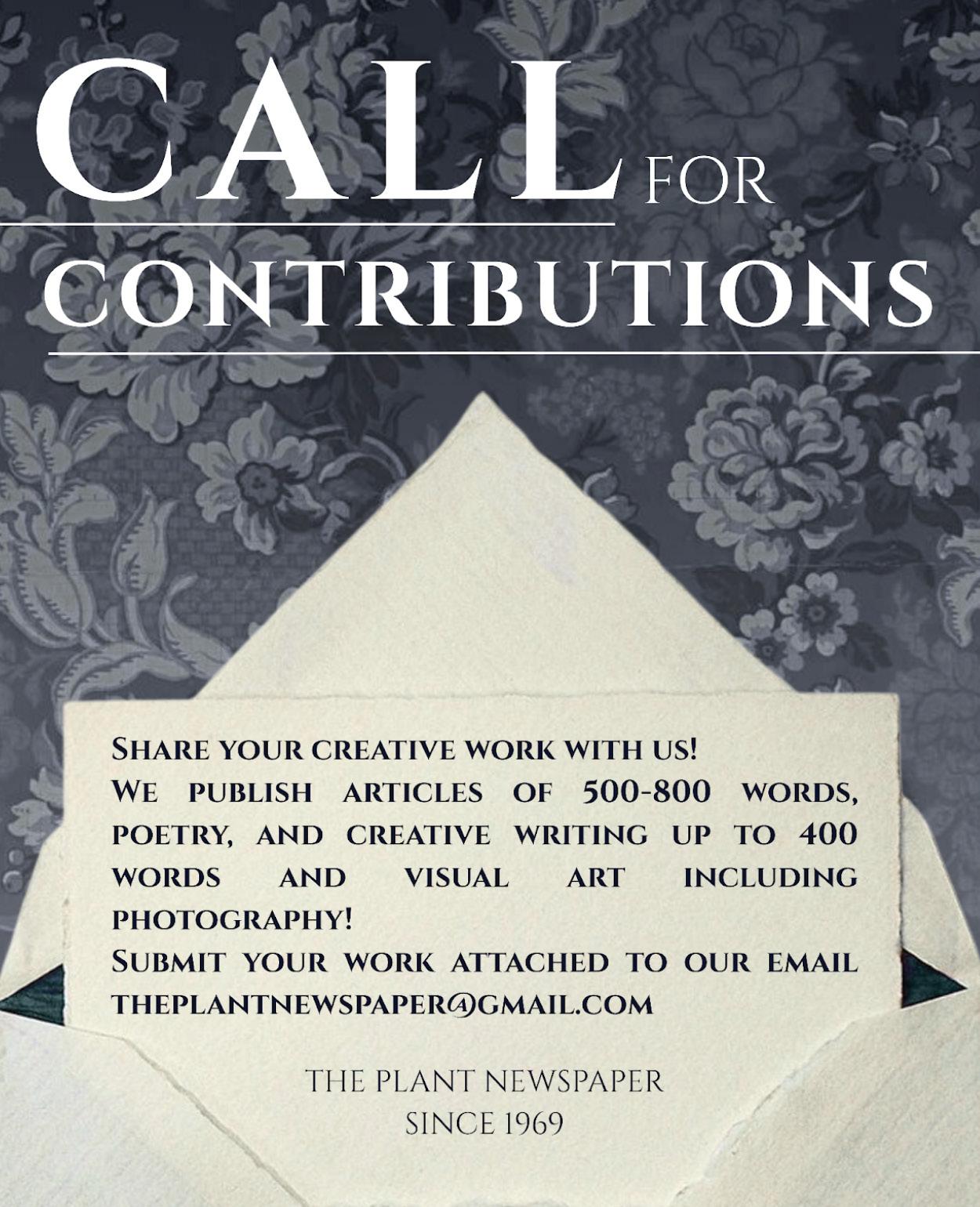
How Subliminal Messaging And The Modern World Has Shaped Advertising.
CLAIRE MIZUKI RODHAM SCIENCE & ENVIRONMENT EDITOR
Everytime I watch an ad recently, I think to myself, “I have absolutely no idea how this is supposed to convince me to buy this product.” While some ads have been consistent in showing sleek and polished images to bring in buyers, in recent developments, others have been so unrelated to the product that you could play a game of “Guess the Ad!” and still end up wrong 90% of the time.
“Is the advertising business taking a weird stance to prioritize shock value and forced authenticity to combat our short attention spans, or is there something more intricate at play?”
And that really got me thinking…is there a deeper strategy at work? Is the advertising business taking a weird stance to prioritize shock value and forced authenticity to combat our short attention spans, or is there something more intricate at play?
My second hypothesis was subliminal messaging, but what even is that? Well, as defined by Merriam-Webster, the word subliminal refers to something “existing or functioning below the threshold of consciousness"; therefore, we can infer that subliminal messaging would be sort of like a secret message that isn’t immediately perceptible to us. These are used to target and influence people without their knowledge and to take away our ability to make decisions about the messages that we consume.
In advertising, subliminal messages are typically visual or auditory. For example, according to Klint, a type of auditory subliminal message is “Backmasking,” which is a technique
used in songs or audio recordings where speech is played backwards into the original recording and is therefore not detectable consciously.
But how do these subliminal messages work? After all, just because we can 't detect the message consciously doesn't mean it can influence us…right? Wrong. This is exactly why they can influence us. This is explained best by Healthline, which states that the human brain might perceive and react to subliminal messages without even realizing it; for this reason, they are thought to be a simple way to influence people’s thoughts and even change their behaviour.
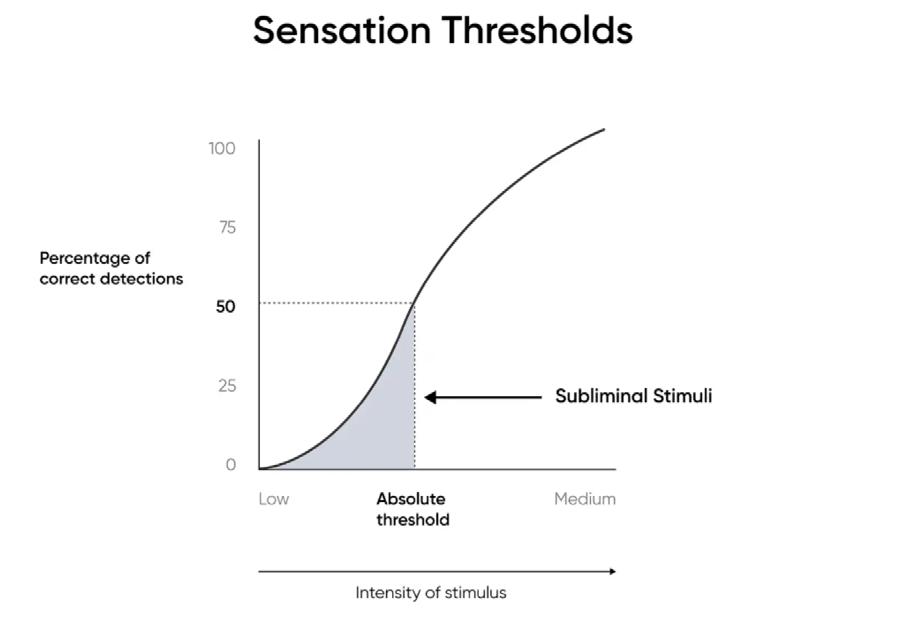
According to Owdt, the human brain’s method of organizing sensation thresholds begins with initial sensory processing, which is followed by thalamus filtering, where the brain determines which information is forwarded to higher brain regions for further action. These subliminal messages are presented below the level of conscious awareness because they may be able to “bypass the primary sensory processing regions and directly activate subcortical brain structures, such as the amygdala for emotional processing or the basal ganglia for automatic motor responses.” Therefore, even though those affected by these subliminal messages may not remember the stimuli, the information may be stored in implicit memory systems and it can affect their emotional responses and their later decisions. However, according to the National Library Of Medicine, the impact of a subliminal message may not be quite as dramatic as described, saying that it is “often considered harmless because its effects typically decay within a second.” The article clarified that any long term effects influenced by subliminal messaging were only observed in stud-
ies where participants were repeatedly provided with highly familiar information. They went on to describe a couple of interesting experiments, one in which they found that subliminal messages could influence decisions concerning personal income. Another experiment revealed that the effects of subliminal messaging didn’t significantly decay between 15-25 minutes. Most notably, they mentionned an experiment where they discovered that presenting vocabulary in a foreign language using subliminal messaging helped participants differentiate whether the translations presented were correct or incorrect.
Considering these effects, it may be useful to try and use subliminal messages to our own benefit. For example, if it is true that these experiments are correct and that subliminal messages could increase familiarity with a language, it could be useful for language learning. And if it can influence decisions related to personal income, maybe you could use it to train yourself to be more responsible with your money.
The possibilities are endless, and while subliminal messages have long been seen as silly and grouped into the same box as exaggerated videos on YouTube that claim to change your eye colour, it is exciting to see where this new area of research will develop and whether we can eventually use this level of consciousness to self train and accomplish our goals.
Do You Know How to Read?
MINOLA GRENT MANAGING EDITOR
You are reading this. But can you really read? Much of our ability not only to read but to process and understand the words, sentences, and paragraphs is intricately linked with how we learned to read. Since the 1940s, experts cannot settle on which of the two methods is the best, in what Lexia Learning calls “reading wars.”
On one hand, the traditional phonics method is deemed best by some. This one involves sounding out or decoding words using knowledge of the alpha-
“When adults will be ready to stop trying to pick sides and come to a compromise for the good of children, we will have a terrific generation of readers.”
bet. For example, to read “dog”, the learner would piece together the individual sounds the letters “D,” “O,” and “G” make to obtain the full word. It is known as a bottom-up approach, meaning you start small and simple to build your way up the complexity ladder.
On the other hand, others prefer the whole language method introduced in the 1800s by Horace Mann, but popularized from the 1940s to the 1960s. The whole language approach teaches “children to memorize the appearance of words instead of teaching them to decode the letters,” explains Lexia Learning. This means that instead of learning that “D” + “O” + “G” spells out “dog,” they memorize what the word “dog” looks like. It is a top-down approach.
Whole language emphasizes meaning first, explaining that harping on spelling and phonics distracts children from the definition of the words behind the letters. This method pushes learners to use context clues to understand the word. Phonics, true to its bottom-up approach, holds that meaning can easily be grafted later on and that sounding out words better equips children in un-
familiar contexts.
In 1955, Rudolph Felsch released a scorching critique of America's shift into whole language in the form of a book called “Why Johnny Can’t Read,” says EBSCO’s Research Starters page. Next, Jeanne Chall published her own conclusions in 1967 after 3 years of research in her book “Learning to Read: The Great Debate.” She found that phonics yielded better results across beginner readers and particularly in children of lower social and economic standing that had limited access to resources. Lexia Learning summarizes her findings saying that “a child must first learn to read before he can read to learn.”
Essentially, the explicit reading instructions provided by phonics as opposed to whole language were more successful, with no compromised comprehension. Despite whole language being dragged by scientists, it also has its advantages. For example, v explains that this approach “promotes learning with understanding.” It fosters a true love and appreciation for reading and encourages vocabulary curiosity naturally rather than artificially through memorization. Over time, “learners see how reading and writing express ideas, emotions, and imagination—skills that go far beyond basic decoding,” says English Lessons
Ultimately, as long as children learn to read, does the teaching method really matter? Well… It does. Learning is an individual process that cannot simply be reduced to method A or method B. Whether phonics or whole language is better isn’t easily determinable, as each child will require a unique combination of both to succeed. This is known as “balanced literacy.”
Unfortunately, each teacher applies the method differently, adding their own spin on things. Since there is no such thing as a universal understanding of balanced literacy, its success is very inconsistent.
The field of reading is a complex one to study. Given the wide array of subjects it covers, such as educational psychology, neuroscience, cognitive science, and literacy, no helping hand is to be disregarded. The next step is building a solid standardized program that can teach children with structure. According to the 2000 National Reading Panel Report, there are five critical aspects to reading instructions: phonemic awareness (the oral and auditory manipulation of sounds), phonics (the auditory and visual manipulation of sounds), fluency, vocabulary, and comprehension. With these guidelines in place, it has become increasingly easy to standardize teaching reading. Later, the International Dyslexia Association introduced the term “Structured Literacy,” focusing on teaching the inner workings of language.
Teaching is a form of parenting and no parenting works without adaptability. The key to raising successful readers is not to stick to a single method from beginning to end, but rather to try to understand what works. Learning to read works better in one-on-one scenarios, allowing the provider to understand the child’s needs and responses. The more recent methods mentioned above seem to work better because they mix phonics and whole language. When adults will be ready to stop trying to pick sides and come to a compromise for the good of children, we will have a terrific generation of readers.

Word Search
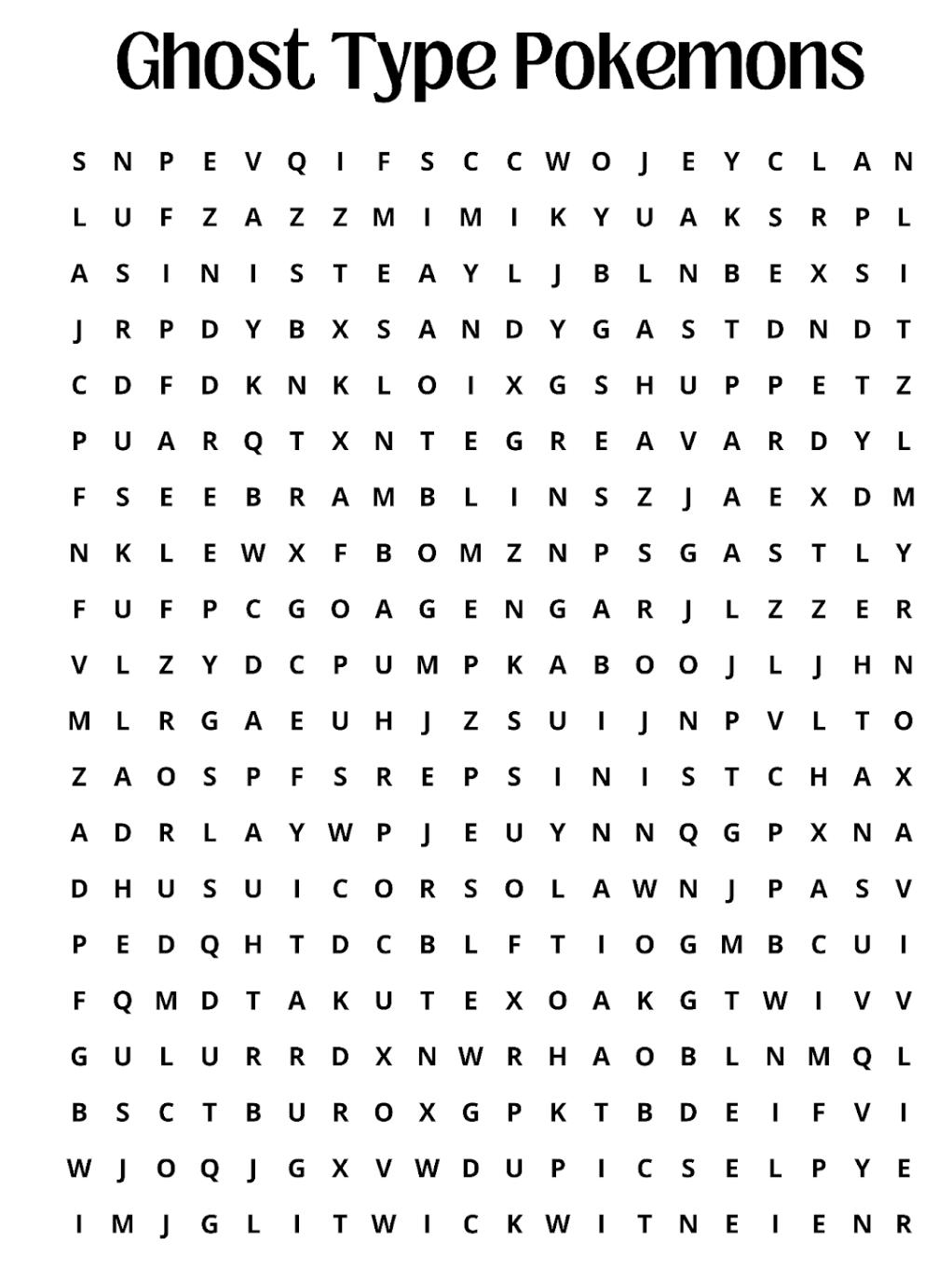

Sudoku
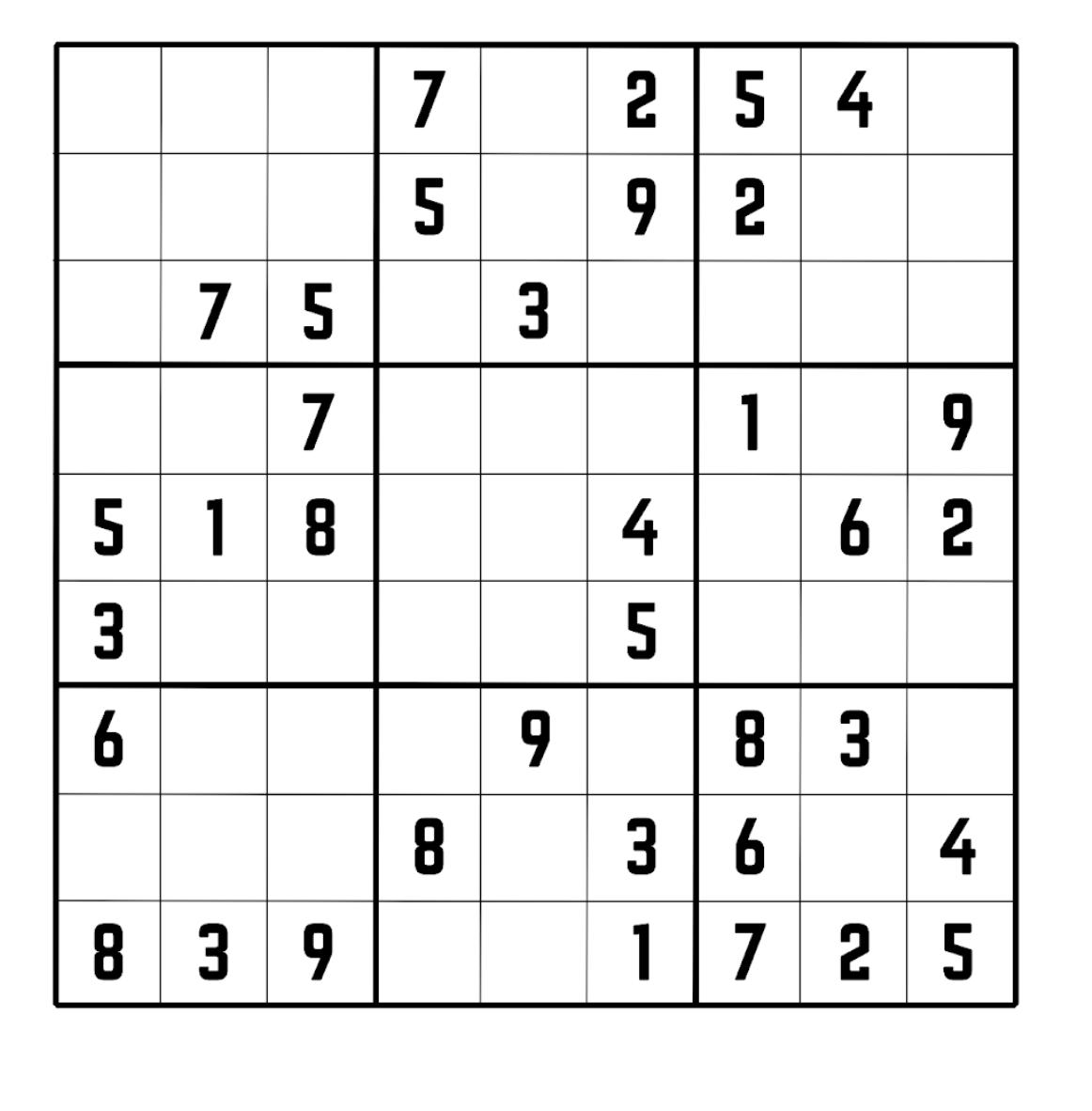

ANSWER TO LAST MONTH’S CROSSWORD:

Horoscopes
ARIES (MAR 21 – APR 19)
Your confidence is through the roof this month. Use it for the projects that matter to you most. Whether they bring you monetary recognition or a feeling of fulfillment, it doesn’t matter. Channel your energy into what matters to you most.
TAURUS (APR 20 – MAY 20)
Reading self-improvement books is a guaranteed way of coming off as annoying. Perhaps during this month of change, resort to other methods of questioning and working on your inner world. Introspection is an important human asset that needs attention every now and then.
GEMINI (MAY 21 – JUNE 20)
Time to switch it up a little, Gemini. Your curiosity and creativity are great assets when picking up a new hobby or study. Perhaps joining a weekly or monthly club with new people will spice up your life.
CANCER (JUNE 21 – JULY 21)
You little freak. Seems like your meaning of love, romance, fun, and all those shenanigans is being explored lately. Who knows what you’ll discover on this journey? Enjoy these trying times.
LEO (JULY 23 – AUG 22)
Seems like good fortune is coming your way, Leo. A promotion, a prize or an acknowledgement will reward your end-of-year hard work. If you win the lottery, you won’t tell, but there will be signs.
VIRGO (AUG 23 – SEPT 22)
The holiday season is around the corner, and the good old value of the family is feeling especially strong for you this month. Focus on the well-being of the people in your home before you return to your daily business.
LIBRA (SEPT 23 – OCT 22)
Standing out and shining your brightest light like a star in the sky is what will set you apart. You want to move towards your goals confidently, even when you’re told it’s unconventional. Keep doing you.
SCORPIO (OCT 23 – NOV 21)
It’s time to sit down and lock in Scorpio. This month is going to be very intellectually stimulating, so you'd better ready your thinking brain cells.
SAGITTARIUS (NOV 22 – DEC 21)
Happy birthday, Sag :) So much is happening in all fronts of your life: family, friends, love, career, money, etc. You may feel lonely in some of these decisions, but don’t worry. Your inner circle will stand by you no matter what.
CAPRICORN (DEC 22 – JAN 19)
This month, you’re presented with opportunities in your romantic life; show how much you appreciate your partner’s patience and support, and, if you’re single, watch out for the one who shares their wisdom with you unsparingly.
AQUARIUS (JAN 20 – FEB 18)
Your relatives have been relying on you lately, whether they needed your moral support or practical aid. And it’s not about to get easy as tension seems to rise among your friends and/or colleagues. If I were you, I’d make sure to have medicine on me for that inevitable headache.
PISCES (FEB 19 – MAR 20)
Upside down and inside out, your world is shifting in ways you can’t predict. You will discover the ins and outs of complicated social interactions that you might or might not desire to acknowledge.
Maya Jabbari Editor-in-Chief
Minola Grent Managing Editor
Cathy Wang Digital Managing Editor
Mika Sauvageau Copy Editor
Nadira Zibirov Copy Editor
Chloe Bercovitz News Editor
Jaqueline Graif Voices Editor
Charlotte Renaud Arts & Culture Editor
Mia Moudilou Arts & Culture Correspondent
Claire Rodham Science & Environment Editor
Daria Gladchii Curiosities Editor
MASTHEAD
Sanad Hamdouna
Chloé Lampron
Aryan Narayanswamy

Julia Azzouz Creative Writing Editor
Daria Gladchii Visual Arts Editor
Nicole F. Motta Staff Writer
Orion Peyrol Staff Writer
Alaa Ettaouth Staff Writer
Angela Dickey Social Media Manager
Sara El Khatir Graphic Designer
Myka Miller Co-Cover Artist
Alexander Solovyev Co-Cover Artist
Marrie Han Cartoonist
Yasmine Bouanani Secretary
theplantnews.com theplantnewspaper@gmail.com @theplantdawson


